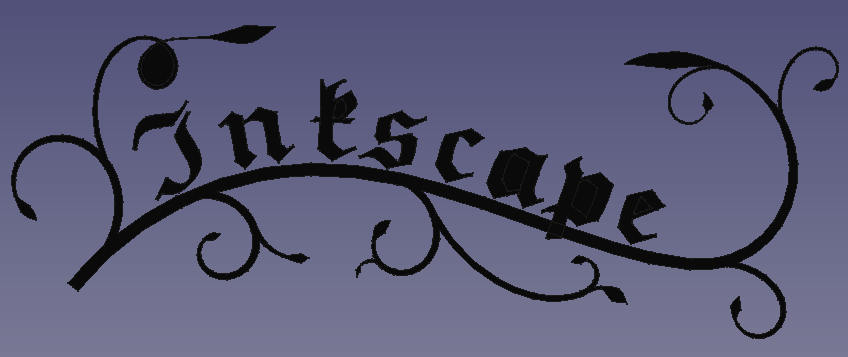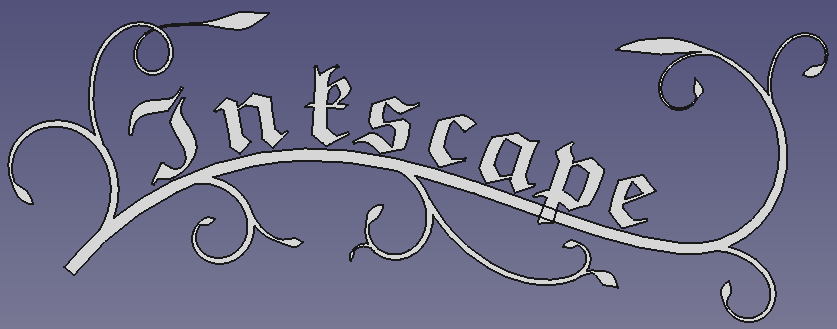Translations:CAM Vcarve/26/pl: Difference between revisions
m (FuzzyBot moved page Translations:Path Vcarve/26/pl to Translations:CAM Vcarve/26/pl without leaving a redirect: Part of translatable page "Path Vcarve") |
No edit summary |
||
| Line 1: | Line 1: | ||
* {{Button|[[File:Draft_ShapeString.svg|24px]] [[Draft_ShapeString/pl|Kształt z tekstu]]}} są użyteczne "po wyjęciu z pudełka". |
* {{Button|[[File:Draft_ShapeString.svg|24px]] [[Draft_ShapeString/pl|Kształt z tekstu]]}} są użyteczne "po wyjęciu z pudełka". |
||
* Pliki SVG wymagają pewnego dopracowania, zarówno w edytorze, jak i w środowisku pracy [[File:Workbench_Draft.svg|24px|link=Draft_Workbench/pl]] [[Draft_Workbench/pl|Rysunek Roboczy]]: |
* Pliki SVG wymagają pewnego dopracowania, zarówno w edytorze, jak i w środowisku pracy [[File:Workbench_Draft.svg|24px|link=Draft_Workbench/pl]] [[Draft_Workbench/pl|Rysunek Roboczy]]: |
||
** W edytorze ''(np. [https://www.inkscape.org Inkscape])'': upewnij się, że plik zawiera tylko ścieżki i że ścieżki są niezgrupowane. Upewnij się, że nie ma przecinających się ścieżek, ''(w Inkscape)'' użyj |
** W edytorze ''(np. [https://www.inkscape.org Inkscape])'': upewnij się, że plik zawiera tylko ścieżki i że ścieżki są niezgrupowane. Upewnij się, że nie ma przecinających się ścieżek, ''(w Inkscape)'' użyj CAM → Uprość i połącz, aby połączyć ścieżki, które się nakładają. |
||
** Przełącz się na [[File:Workbench_Draft.svg|24px|link=Draft_Workbench/pl]] [[Draft_Workbench/pl|Rysunek Roboczy]] w selektorze [[Std_Workbench/pl|środowisk pracy]]. |
** Przełącz się na [[File:Workbench_Draft.svg|24px|link=Draft_Workbench/pl]] [[Draft_Workbench/pl|Rysunek Roboczy]] w selektorze [[Std_Workbench/pl|środowisk pracy]]. |
||
** Zaimportuj SVG używając {{MenuCommand|Plik → Import → wybierz "SVG jako geometria"}}. |
** Zaimportuj SVG używając {{MenuCommand|Plik → Import → wybierz "SVG jako geometria"}}. |
||
Revision as of 15:13, 28 March 2024
Kształt z tekstu są użyteczne "po wyjęciu z pudełka".
- Pliki SVG wymagają pewnego dopracowania, zarówno w edytorze, jak i w środowisku pracy
Rysunek Roboczy:
- W edytorze (np. Inkscape): upewnij się, że plik zawiera tylko ścieżki i że ścieżki są niezgrupowane. Upewnij się, że nie ma przecinających się ścieżek, (w Inkscape) użyj CAM → Uprość i połącz, aby połączyć ścieżki, które się nakładają.
- Przełącz się na
Rysunek Roboczy w selektorze środowisk pracy.
- Zaimportuj SVG używając Plik → Import → wybierz "SVG jako geometria".
- Wynik powinien wyglądać podobnie do tego:
- Ścieżki z dziurami (litery, winorośl na powyższym obrazku) są importowane jako dwie oddzielne ścieżki (nazwane zgodnie z
Path905iPath905001w oknie Widoku drzewa), jedna z nich to dziura, a druga to kontur;. Zajmiemy się tym w następnym kroku
- Ścieżki z dziurami (litery, winorośl na powyższym obrazku) są importowane jako dwie oddzielne ścieżki (nazwane zgodnie z
- Aby uzyskać ściany 2D, Wycięcie V potrzebuje:
- Dla ścieżek bez otworów:
- Wybierz ścieżkę
- Wybierz Modyfikacja →
Ulepsz kształt
- Następnie Modyfikacja →
Rozbij kształt
- Dla ścieżek z dziurami:
- Wybierz ścieżkę zewnętrzną, a następnie wewnętrzną
- Wybierz Modyfikacja →
Rozbij kształt dwa razy
- Dla ścieżek bez otworów:
- Aby uzyskać ściany 2D, Wycięcie V potrzebuje:

